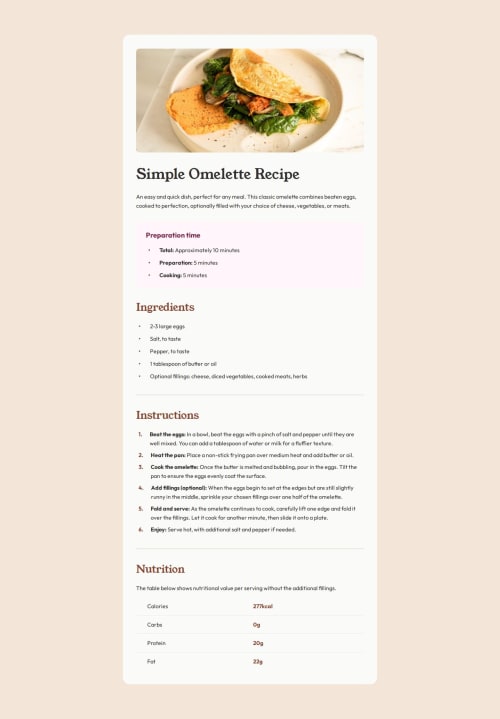Recipe Card using React, TailwindCSS and Vite

Solution retrospective
Proud of: Separation between Mobile and Desktop components allows for simple, declarative styling without having to use complex CSS rules.
Would do differently: Make better use of component composition.
What challenges did you encounter, and how did you overcome them?Challenges: Duplicate code, verbosity with TailwindCSS classes.
How I overcame them: Interface definitions, interface composition.
Please log in to post a comment
Log in with GitHubCommunity feedback
- @victor3spoir
Great job,
Your design look closer to the suggested one. Padding used in your design are wider than ones on the design; You should paid attention to details about used color in the design, that could help you design more precisely what the gave you to design.
See you.
Join our Discord community
Join thousands of Frontend Mentor community members taking the challenges, sharing resources, helping each other, and chatting about all things front-end!
Join our Discord